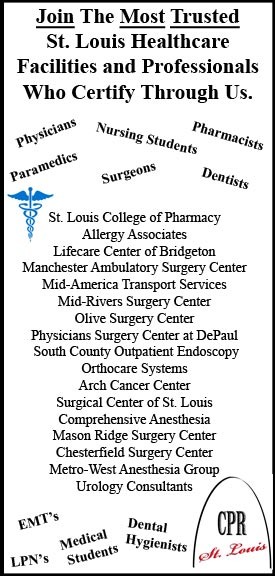Microbiology Unknown Reports
Here are microbiology reports written by nursing students and other students in healthcare provider programs. Students were given 2 unknown bacteria in a test tube that they would have to isolate and ultimately identify. These reports include the procedures and methods that the student used, as well as a nice summary of one of the unknown bacteria that they were given.
Overall, these reports provide nice examples of what an unknown lab report in microbiology might look like, as well as give some good information about common bacteria.
Pseudomonas aeruginosa is found in water, soil, and on humans. Is bacterium can live in aerobic and anaerobic conditions. This is an opportunistic bacterium. Most people are not harmed by this pathogen, it is when the person is in the hospital for a long period of time this bacterium takes its chance to infect. It can live on a wide variety of nutrients, it can also live for 6 hours up to 16 months on inanimate, dry hospital surfaces. Nosocomial infections include urinary tract infections, pneumonia, and bacteremia. P. aeruginosa is the fourth most common nosocomial isolated pathogen, making up 10% of all nosocomial infections. Some infections can be complicated and life-threatening in patients with a lowered immune system, especially those with a low white blood cell count.
Bacillus cereus is an aerobic spore-forming bacterium that is commonly found in soil, on vegetables, and in many raw and processed foods. B. cereus food poisoning may occur when food is prepared and held without adequate refrigeration for several hours before serving. Foods incriminated in past outbreaks include cooked meat and vegetables, boiled or fried rice, vanilla sauce, custards, soups, and raw vegetable sprouts. (3) B. cereus is a type of bacteria that produces toxins. These toxins can cause two types of illness: one type is characterized by diarrhea and the other, called an emetic toxin, by nausea and vomiting (1).
As of 1993, Bacillus cereus was not considered a pathogen, but it is now recognized as one. This bacterium is known as the cause of food poisoning, diarrhea, and non-gastrointestinal infections. Bacillus cereus produces what is known as beta-lactamase, which causes it to be resistant to beta-lactam antibiotics.
Enterococcus faecalis is gram-positive cocci. Its phylum classification is firmicutes and its kingdom is eubacteria. This bacterium is a non-motile facultative anaerobe. Some properties are that it ferments glucose without gas production and that is doesn’t produce catalase. This bacterium inhabits the gastrointestinal tract of humans and other mammals and in the right amount is considered normal flora. They actually give this as a main constituent of some probiotic food supplements.
Several tests were performed to conclude the gram-negative bacteria was Escherichia coli and the gram-positive bacteria was Staphylococcus epidermidis. Performing a gram stain on gram-negative and gram-positive showed that the gram-negative bacteria was a negative rod and that the gram-positive bacteria was a positive cocci. For the gram-negative bacteria a gelatin test was inoculated to detect if the protein was broken down by gelatinase, which it was not eliminating the bacteria Pseudomonas aeruginosa.
Staphylococcus aureus is in the Staphylococcaceae family. It is usually found in nasal passageways but can also be found on skin, in the oral cavity and gastrointestinal tract. It can be carried as part of the normal bacterial flora. Staphylococcus aureus is commonly known because of MRSA (methicillin-resistant Staphylococcus aureus) which is an epidemic in the medical world because of its antibiotic resistance. S aureus can become pathogenic through tissue invasion and toxin pollution. Vancomycin is the antibiotic usually prescribed because of resistance to penicillin.
Pseudomonas aeruginosa is a respiratory and skin pathogen that produces elastase and collagenase, which digest elastin and collagen. It lives in water, soil, plants, and skin flora. This Gram negative rod is aerobic, meaning it needs oxygen to thrive. It is becoming increasingly recognized as an opportunistic pathogen of clinical relevance. It almost never infects healthy tissue, however when compromised, it can affect almost any tissue. Its been known to cause Urinary tract infections, respiratory infections, bacteremia, dermatitis, bone and joint infections, and a variety of other systemic infections (especially in cancer, burn, or AIDS patients).
Staphylococcus epidermidis – report by Jessica Unruh
Staphylococcus epidermidis is from the genus Staphylococcus and the family Staphylococcaceae. It is found in the human flora and mucous membranes, as well as in animals. S. epidermidis is a Gram-positive bacteria. It is not usually pathogenic but can cause problems in individuals with weakened immune systems. S. epidermidis is known to produce biofilms.
Staphylococcus aureus – report by Maureen Schleeper
After performing the nitrate test and the mannitol test with clear positive results, the unknown bacteria A was determined to be Staphylococcus aureus. No problems were encountered in this testing process. This identification was verified by the instructor. S. aureus is a spherical bacteria occurring in irregular clusters. It can be found mainly in the nasal passages, skin, oral cavity or gastrointestinal tract. S. aureus is considered a pathogen. One version of the S. aureus species has become resistant to most antibiotics in use today, thus acquiring the name MRSA (Methicillin-resistant Staphylococcus aureus).
Staphylococcus epidermidis – report by Courtney Wiedemer
Staphylococcus epidermidis belongs to the genus Staphylococcus. It is typically found colonizing the skin and mucosa of humans. S. epidermidis is part of the humans’ normal flora. Most strains of S. epidermidis are nonpathogenic, but can be pathogenic in the hospital environment. S. epidermidis is a facultative anaerobe. It is mainly spread by skin to skin contact or medical instruments during procedures. S. epidermidis causes infections such as meningitis, urinary tract infection, conjunctivitis, and endocarditis.
Klebsiella pneumoniae – report by Amy Kaiser
Klebsiella pneumoniae is a Gram-negative rod bacterium that can form a capsule. It is found in the normal flora of GI tracts in humans. K. pneumoniae can become pathogenic in patients whose immune systems are compromised. K. pneumoniae can cause nosocomial urinary tract infections and pneumonia. In immunocompromised patients, death is possible (Klebsiella). For a person (patient) to get the K. pneumoniae bacteria, they have to have direct contact with another person. K. pneumoniae is not able to be contacted through the air (Centers for Disease). Healthcare workers can help to decrease the spread of K. pneumoniae by washing their hands before and after taking care of a patient.
Enterococcus Faecalis – report by Brianna Wensler
Enterococcus faecalis is a nonmotile, gram-positive, circular-shaped bacterium. It can be observed singly, in pairs, or in short chains. It is a facultative anaerobe with a fermentative metabolism. Enterococcus faecalis along with all of the enterococci are closely related to streptococci and are found in the bowel of humans and animals alike. It can also be found in the water, soil, and in nature due to contamination by animal excrement and untreated sewage. Enterococci tolerate many ranges of temperatures and conditions. They can survive in temperatures ranging from 10˚C to 45˚C and in hypotonic, hypertonic, acidic, or alkaline environments.













